Understanding Redundant Array of Inexpensive Disk (RAID)
The term RAID is a common
parlance in any Enterprise infrastucture.
So, what exactly is it ???
RAID stands for
Redundant
Array of
Inexpensive (or
Independent) Disk
and makes two or more physical disks appear as one
logical disk to the Operating System.
Great, but why do we need it ???
Enterprises use RAID
for the following reason(s):
-
Increased Capacity ::
combines multiples inexpensive physical disks to
form a larger capacity logical disk
-
Increased Performance ::
disk IO is spread across multiple physical disks
thereby increasing read and write throughput
-
Redundant and Fault Tolerant ::
allows one to replace failed disk(s) and prevent data loss
The following are some of the commonly used terms in
the RAID lingua franca:
-
RAID Controller :: is the
main component that manages how the data is written to and/or
read from the array of physical disks
-
Data Striping ::
Striping distributes data blocks across the physical disks
for better throughput through parallelism
-
Data Mirroring :: Mirroring
writes a given data block to two physical disks in parallel
for data redundancy
-
Parity :: Parity data block
is created using the XOR operation on two data blocks from
two physical disks. Using the Parity data block, RAID
can recover the other data
block if one of them is lost due to disk failure. The
following illustrates how the Parity data block is computed:
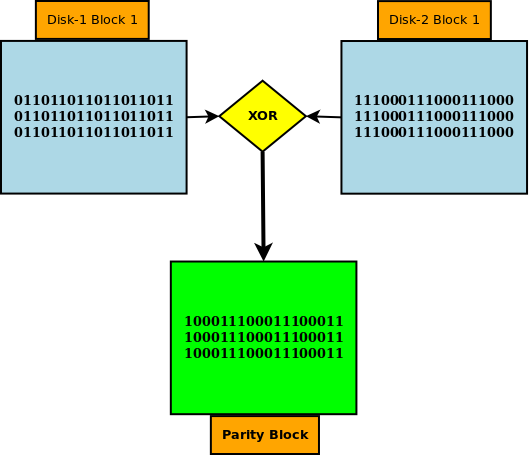
Figure.1
The following paragraphs list and describe the most
commonly used RAID levels:
This is the simplest RAID configuration.
-
Requires at least two physical disks
-
Uses data striping
-
Does NOT use data mirroring
-
Does NOT use parity
-
No data redundancy
-
Provides superior read/write performance
-
Efficient logical disk space usage
The following visually illustrates RAID
Level 0:
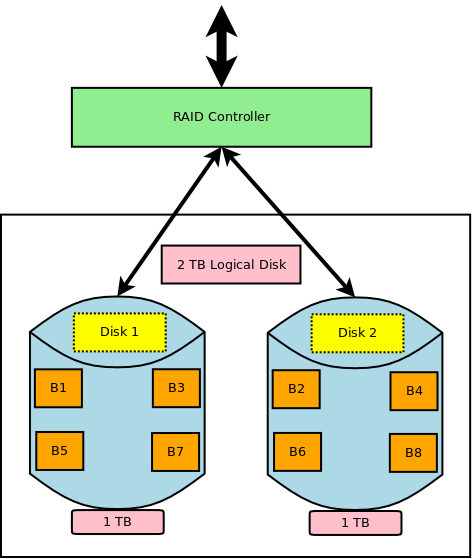
Figure.2
A given data block is stored on both the disk drives. When a disk
drive fails,
the other disk drive comes to the rescue.
-
Requires at least two physical disks
-
Does NOT use data striping
-
Uses data mirroring
-
Does NOT use parity
-
Provides data redundancy
-
Provides decent read/write performance
-
Only 50% of logical disk space can be used
The following visually illustrates RAID
Level 1:
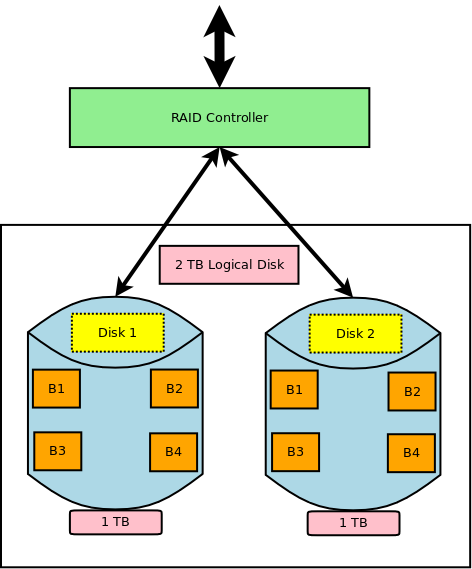
Figure.3
A given data block is striped and a parity block is created &
distributed amongst the disk drives. When a disk
drive fails, it can be recreated using the remaining disk drives.
-
Requires at least three physical disks
-
Uses data striping
-
Does NOT use data mirroring
-
Uses distributed parity
-
Provides excellent data redundancy
-
Provides excellent read/write performance
The following visually illustrates RAID
Level 5:
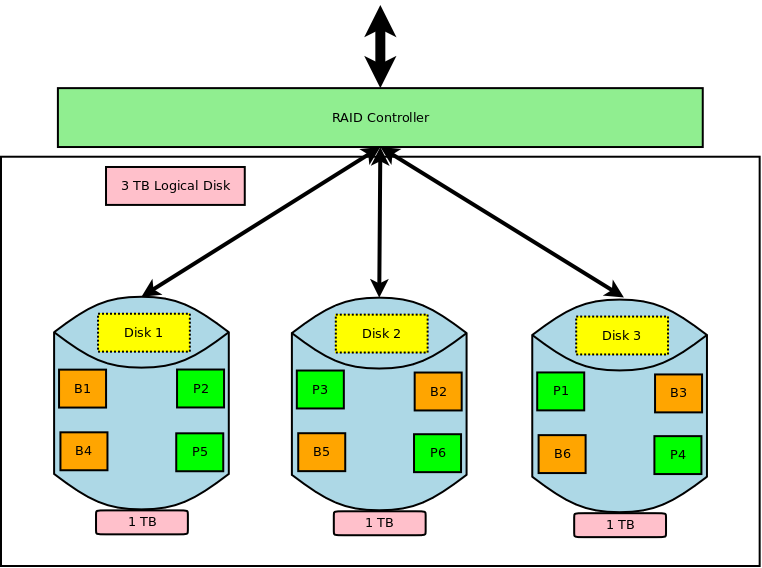
Figure.3
Thus far we have seen all the RAID Levels
use an array of physical disks to form a logical
RAID disk.
Nothing is preventing a RAID Level
from using the logical RAID disks.
RAID 10 is nothing more than a
combination of RAID 1 and
RAID 0. RAID 10
is also referred to as RAID 1+0.
-
Requires at least four physical disks
-
Uses data striping
-
Uses data mirroring
-
Does NOT use parity
-
Provides superior data redundancy
-
Provides superior read/write performance
The following visually illustrates RAID
Level 10 (or 1+0):
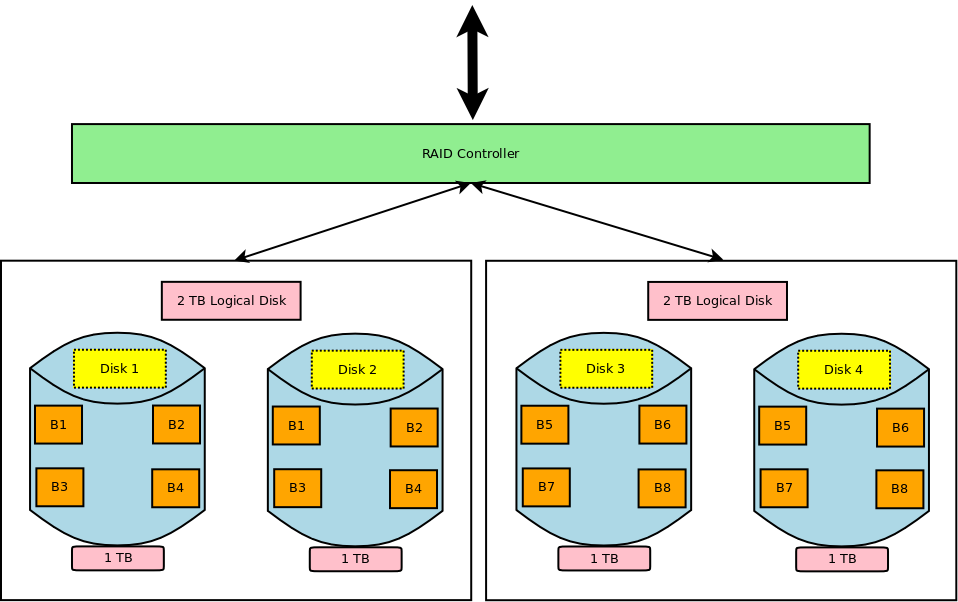
Figure.4
 Figure.1
Figure.1


